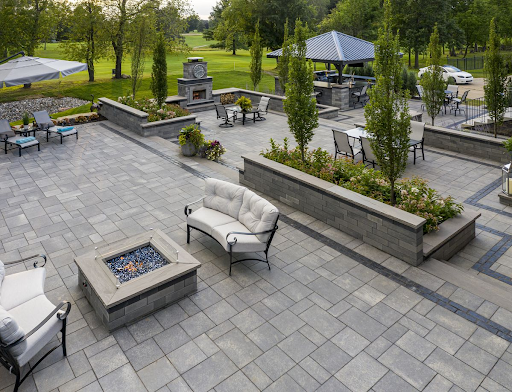Outdoor spaces hold the power to shape our connection with nature. A thoughtfully designed garden, patio, or walkway can turn an ordinary yard into a sanctuary. Among the many elements used in crafting these inviting spaces, few are as versatile and visually striking as pavers. They bring structure, texture, and creativity to any setting, redefining how we experience the outdoors.
Beauty And Function Working Together
Great landscape design is a balance of form and function. Every detail—from the placement of plants to the choice of hardscape materials—plays a role in creating harmony. Pavers step into this balance with ease. They offer durability for paths and patios, yet they also enhance the visual rhythm of a garden. Their geometric forms guide the eye while their earthy tones blend seamlessly with natural surroundings. Whether they frame a pool, line a driveway, or define a courtyard, pavers turn practicality into art.
Versatility Of Pavers In Outdoor Settings
Pavers, defined as small, flat stones or blocks used to create outdoor surfaces, are among the most flexible tools in landscape design. They come in countless shapes, materials, and colors, giving designers the freedom to experiment. Concrete, brick, natural stone, and even porcelain pavers each bring a unique character to the scene. Some evoke rustic charm, while others create a sleek, modern aesthetic. This adaptability makes them ideal for both contemporary and traditional landscapes. In any style, pavers ground the design, offering a sturdy and elegant foundation.
Texture And Pattern Through Pavers
Texture brings life to an outdoor space. Pavers add that texture in subtle yet powerful ways. A herringbone pattern creates movement underfoot, while a random stone layout adds a natural feel. Designers often play with contrast—smooth slabs beside rough cobblestones—to add depth and personality. The repetition of pavers along pathways draws visitors forward, creating a sense of direction. Every pattern tells a story, and every step across those patterns connects people more deeply with their surroundings. That is the quiet magic of pavers in landscape design.
Defining Space And Flow In Landscape Design
Landscape design, at its core, is about shaping how people move through space. Pavers became the language of that movement. They mark boundaries without the need for walls and lead the eye naturally from one area to another. A winding path made of warm-toned pavers can invite exploration, while a sleek patio of uniform tiles sets the stage for relaxation. These landscape design choices influence how outdoor areas are used—whether as gathering places, tranquil retreats, or lively entertainment zones. Through thoughtful placement, pavers help craft a natural rhythm that feels both intentional and effortless.
Sustainability And Durability Of Pavers
Beyond beauty, pavers also bring practical advantages. They are known for their strength, longevity, and low maintenance. When installed correctly, they can withstand heavy traffic and harsh weather for decades. Permeable pavers even allow water to seep through, reducing runoff and promoting groundwater recharge—a small but meaningful contribution to environmental health. Unlike poured concrete, damaged pavers can be easily replaced without disturbing the rest of the surface. This makes them not only sustainable but also cost-effective over time.
Conclusion
Pavers do more than decorate—they define, protect, and elevate outdoor spaces. Their versatility bridges design and durability, offering endless possibilities for creativity. In the hands of a skilled designer, they turn bare ground into living art. Whether used to form pathways, patios, or entire courtyards, pavers bring balance between human comfort and natural beauty.




